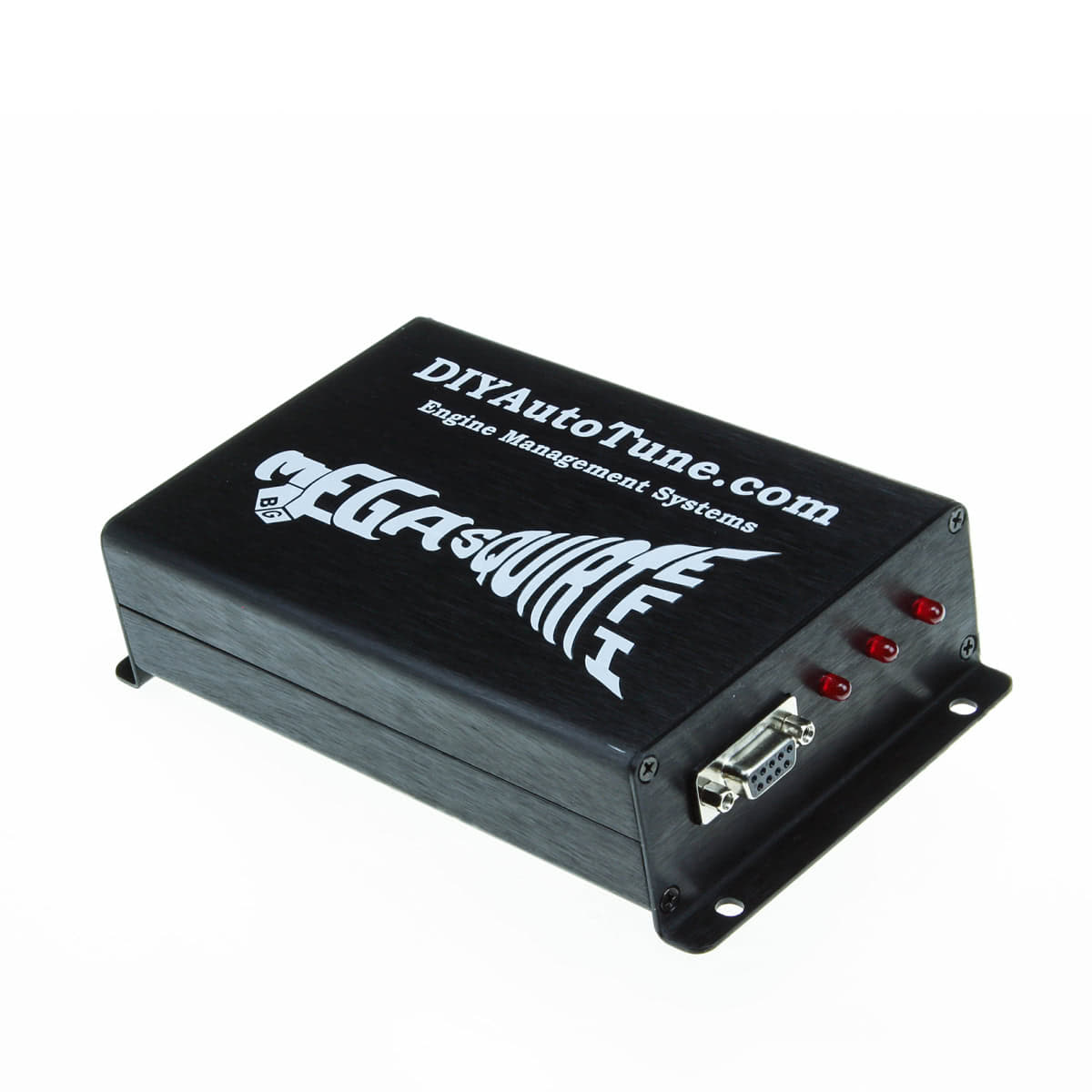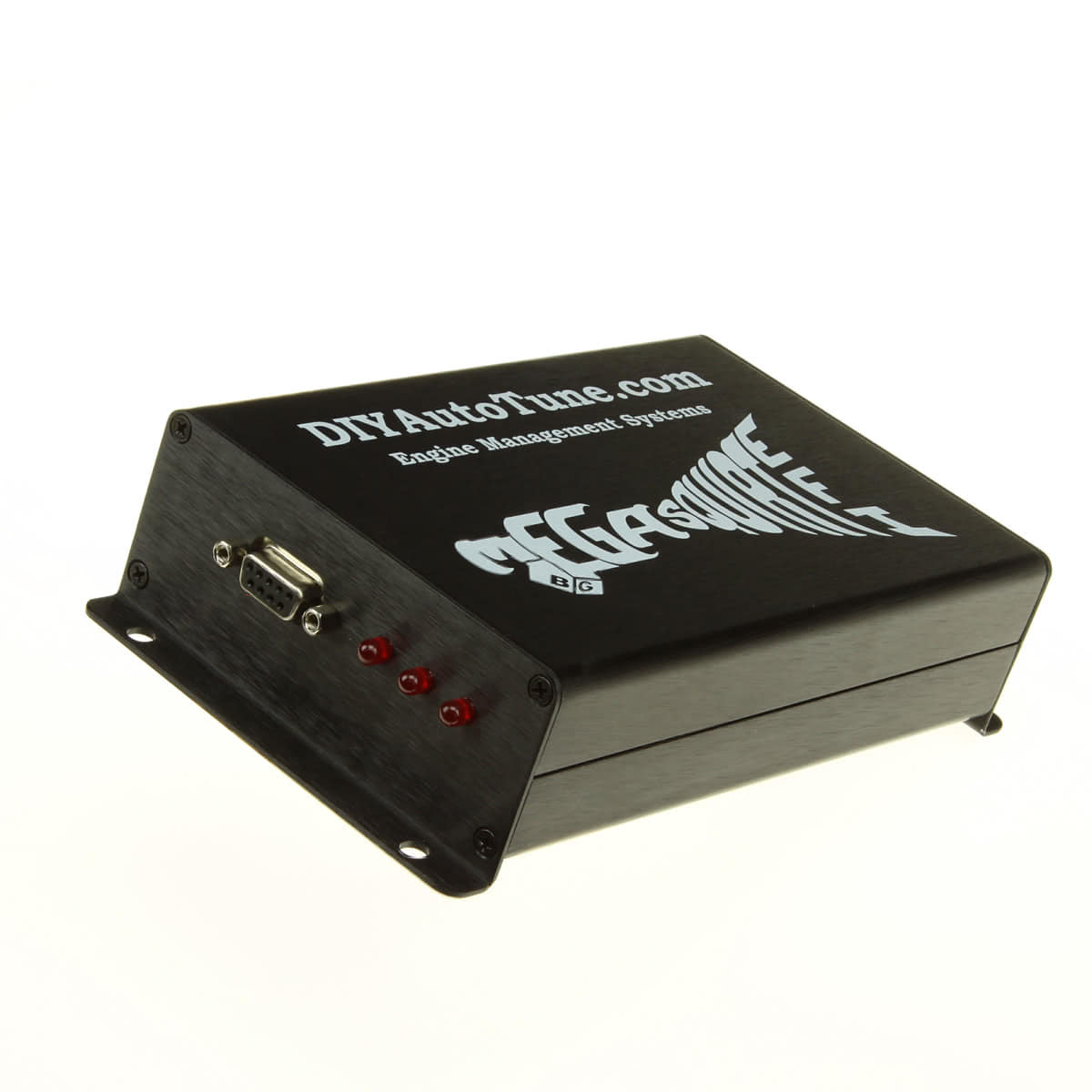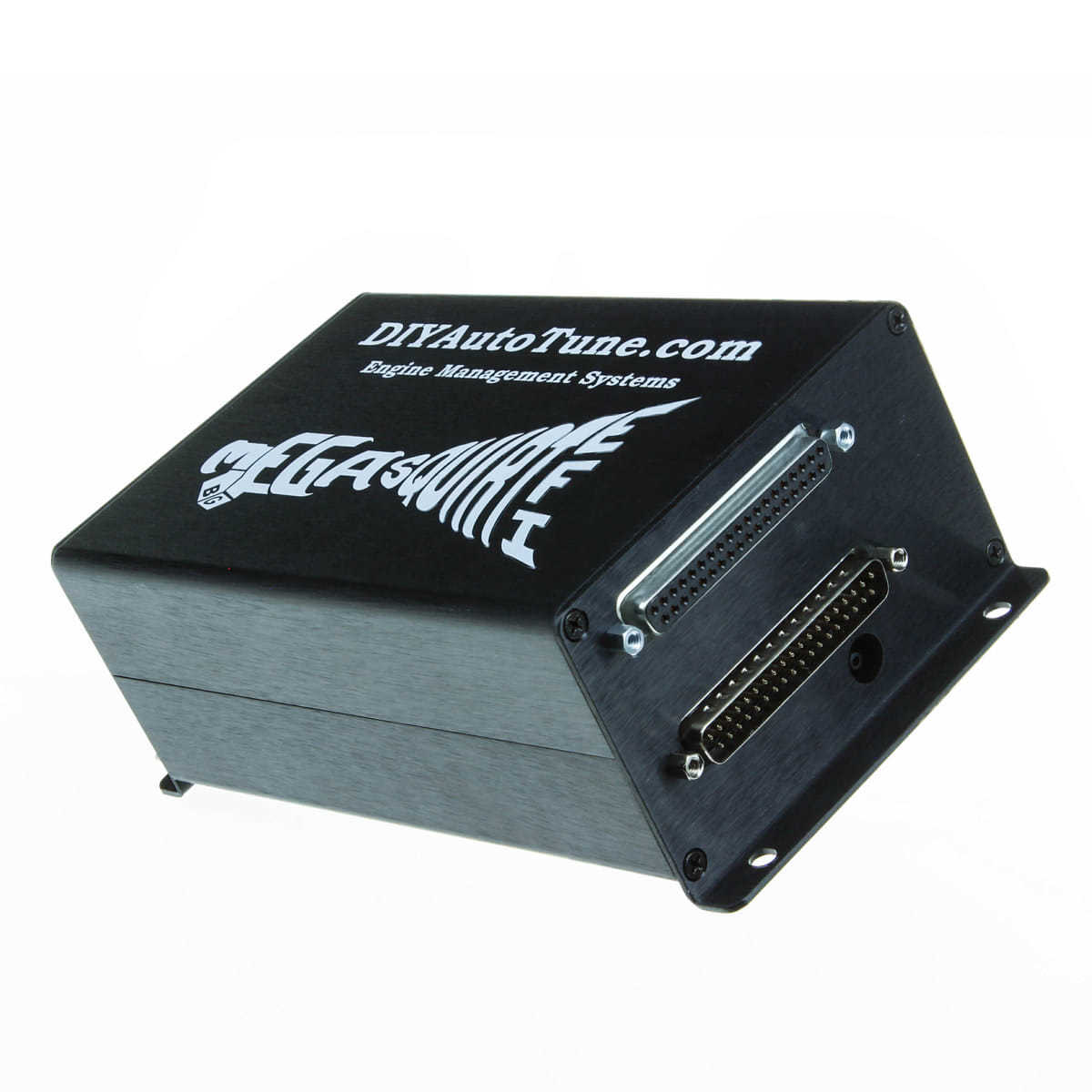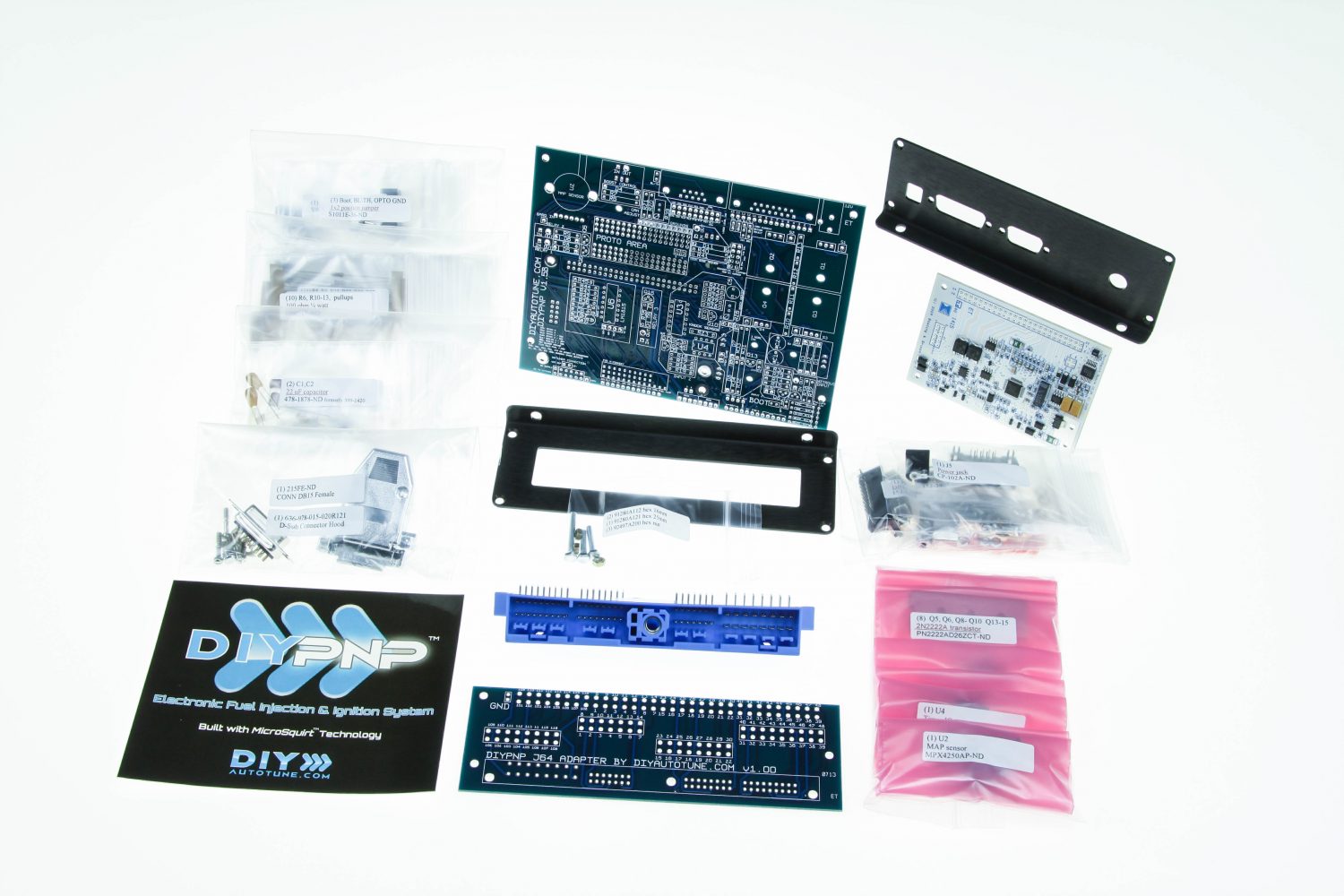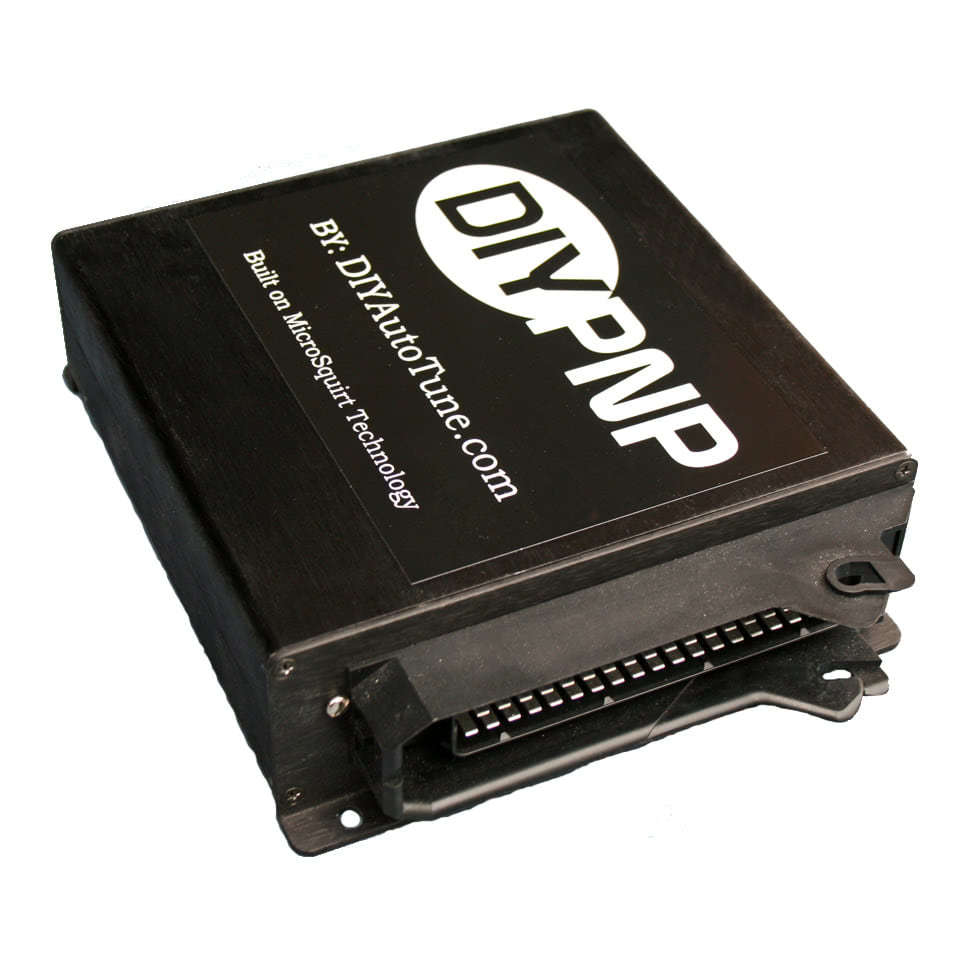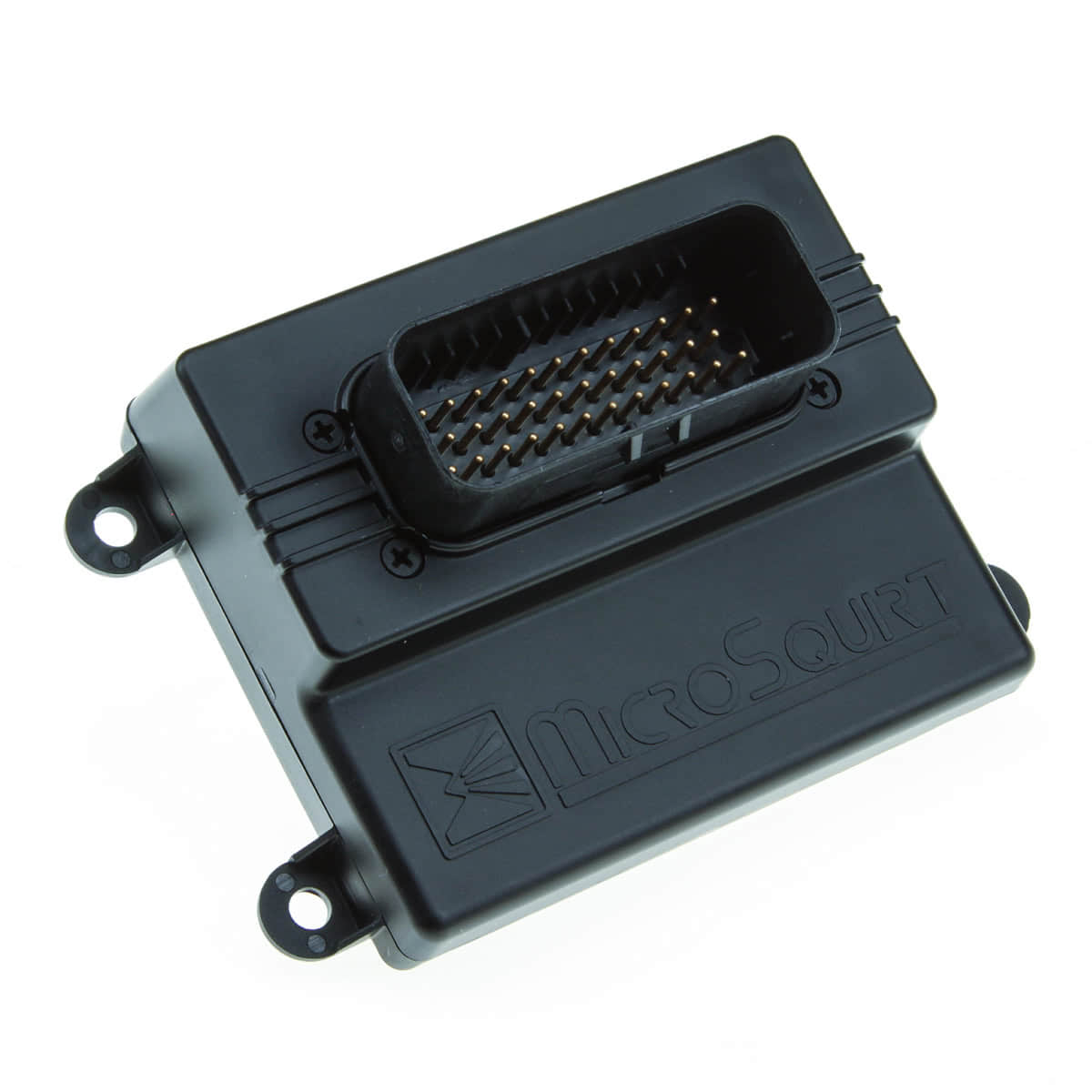Contact our Technical Sales Team to discuss the perfect system for your Engine Management Needs!
Email us at websales@diyautotune.com with some details on your vehicle, engine and and must-have features and we’ll make sure you’re pointed in the right direction!
Low cost DIY EFI Electronic Fuel Injection options for users who don’t mind putting a little elbow grease/solder into the project to save a bundle of cash.
Would you prefer to spend less money, and don’t mind putting in a bit more work? Do you enjoy the satisfaction of working on your own car? If you love the pride that comes from knowing you built everything on the car, you can even get a kit to build your own Engine Control Unit from a circuit board and bags of parts! If you don’t want to build the whole ECU, but still want a very affordable solution and don’t mind making a few changes to an off the shelf ECU to accomplish your goals, read on down lower on this page.
If this isn’t you at all and you just want a system that comes out of the box ready to wire in, or maybe even ready to just plug-in with no wiring required, jump back to the Intro of this section, or jump directly to the Wire-In systems, or the Pro/Plug-N-Play systems here.
MegaSquirt DIY EFI Un-Assembled Kits
DIYAutoTune MegaSquirt build-it-yourself kits are incredibly well documented, clearly labeled kits where every component is labeled with its component number (to let you know where to install it on the PCB), as well as how to bend the components leads to fit the board easily, and whether or not the component needs to be put in a specific way or if it can be put in either way (some components don’t care and can’t be put in backwards, others do, and we let you know which right on the bags they come in).
Tens of thousands of people around the world have successfully built their own MegaSquirt ECU and run their engines on an Engine Control Unit they built themselves. And many of these individuals have gone on to successfully compete in a huge variety of motorsports. It’s not too hard for you to build your own ECU if you’ve got a bit of patience and are excited about the project and what you’ll learn along the way. Ever ‘painted by numbers’ before? It’s truly that simple to follow the directions and build your own ECU, by numbers.
If you are looking for the lowest cost rock solid fully tunable EFI and Ignition control solutions available, you’ve found it! If you care less about cost, but enjoy the project aspect and the appeal of building your own ECU and running your engine on it, again, you’ve found it! If you like the idea of learning more about how your engine works and how it is controlled, and building that knowledge to intimately know exactly how to get the most of your current engine and others you work with in the future, there’s just no better way. You will understand you engine, its air/fuel/ignition needs and more, and you will learn how to get the most out of it. These MegaSquirt DIY EFI Electronic Fuel Injection kits continue to be extremely good sellers and customers have some incredible results running these systems they built themselves, and they had a blast doing it.
DIYAutoTune MegaSquirt Assembled Engine Control Units
If you don’t want to build your own ECU but aren’t afraid of a little internal tinkering you can also order a low priced, Assembled MegaSquirt ECU. In many cases, these will be good to go for your engine right off the shelf, and as such this paragraph really crosses over to our ‘wire in ECUs’ section, and you should read that next. Contact us to discuss your specific needs, and if needed, you can DIY some minor soldering of additional components to add some ‘extra’ capabilities you want to run on your engine, or we can do that work for you, putting you squarely in that ‘Wire In ECU’ camp not having to do anything inside the Engine Control Unit at all accept maybe adjust a dial or two to fine tune the system to your ignition pickup. Otherwise, you just wire it up!
The DIY EFI approaches discussed all share a common thread – they’ll take a bit of research to determine what you need and will require you to know your engine and ignition system well (or learn it, which isn’t a bad thing), so they’ll be a bit of a learning experience. Without a doubt though, when you put that effort into your system your results will be incredible and at the same time less expensive than pretty much any other engine management system option available.
OK, but which DIY EFI MegaSquirt System is right for me?
This is the line that started it all. These are universal, wire-in systems that come in build it yourself kit form and as Pre-Assembled ECUs. We’ve constructed a page to explain all the basic MegaSquirt variants in more detail. Here is a quick comparison between the major versions, using V3.0 / V3.57 boards. This uses the current release code; some features may be added in later code updates.
| MegaSquirt-II | MegaSquirt-III (with MS3X) | ||
| Firmware version used when making this chart | MS2/Extra 3.4.4 | 1.5.1 | |
| Fuel control | 2 channels, bank to bank Can be expanded to 4 channel sequential, but it’s not easy. |
8 channels, fully sequential. An additional two channels can be used for a second stage. (8 sequential plus 2 batch staged) |
|
| Fuel precision | 0.6 microseconds | 0.6 microseconds | |
| Ignition control | Up to 6 channels available | Up to 8 channels available | |
| Idle control | On / off, PWM, stepper | On/ off, PWM, stepper | |
| Communication | RS232 serial | RS232 serial, USB | |
| Data logging | Through laptop | Internal SD Memory Card for on-track recording without a laptop, or optionally datalogging through laptop is also supported. |
Note these are just the highlights– there are other things to consider such as the fact that MS3/MS3X have a large number of inputs and outputs that can be used for data logging extra parameters and controlling more on your engine that the MS2 either does not support, or has fewer options to use.
Then, we have accessories; here is a rundown of the ones you may want to consider.
Must Haves
JimStim – This isn’t 100% required but it should be in our opinion, let’s say 98% if you’re building the Engine Control Unit yourself, and 80% required (or recommended) if you’re buying a pre-assembled ECU. During kit assembly there are several sections that you complete one at a time and test the unit after each section. You will need the JimStim to be able to test the unit. After assembly, or if you buy a pre-assemble ECU the stimulator will help you to get familiar with the MegaSquirt and the tuning software before ever attempting to install the ECU on your engine. This is also an excellent tool for testing your Megasquirt ECU while you are working through building your wiring harness.
If you don’t purchase a JimStim for yourself, you should at least make sure you know someone who has one that you can borrow when (not if) needed. We’ve never had anyone regret buying one, we’ve had plenty of people regret NOT buying a JimStim, and then place a second order for it.
Tuning Cable – You’ll need this to connect your laptop/PC to your ECU. It’s a standard DB9 Straight-thru serial cable, meaning pin1 goes to pin1, 2 to 2, 3 to 3, etc. You can find it in the ‘Tuning Cables’ section of the catalog.
Optional
USB-Serial Adapter – If your laptop has a real DB9 serial port, then you don’t need this. If not then you probably do. Many USB-Serial adapters are very troublesome when used with the MegaSquirt and TunerStudio; we tested a couple to find one that works reliably every time.
Relay Board and Cable – Though the Relay/Power Board is not required, it is a convenience and reduces the chance of miswiring during the installation. The relay board provides a central place for all of the required relays, fuse protection, and external wiring for the MegaSquirt ECU.
If you are installing MegaSquirt in a previously fuel injected engine you can usually just reuse all of your existing relays. If you are fuel injecting a previously carbureted engine, you will need to install relays for the main ECU power, Fuel Pump, and Idle circuit. You can do this manually or you can use the Relay Board to simplify this process. You can also build the cable yourself with the included DB37 and hood that included (one w/ the relay board, one with the Engine Control Unit kit), or as the cable is kind of a pain to build I’ve made them available pre-assembled as well.
Note that the relay cable and the wiring harness are mutually exclusive- they are not designed to be used together as once you use a relay cable you just need to run all wiring back to the screw terminals on the relay board, not a DB37 connector like the harness uses. I have had customers buy both just to harvest the labeled/color coded automotive grade wiring after cutting the DB37 off.
Lead Bending Tool – Makes life a little easier when building out the kits as it allows you to precisely bend the leads to fit properly into the PCB. Our kit labels are marked with the proper spacing for each component eliminating guesswork.
Wideband o2 Sensor/Controller – Highly useful for tuning as this will display your exact air/fuel ratio accurately so you can tune appropriately. Narrowband o2 sensors (OE on most cars) are ONLY accurate at 14.7:1 so they are nearly useless for tuning; wideband gauges are accurate from 10:1-20:1. I have units with and without gauges.
The LC-2 is an affordable unit suitable for permanent in-car installation, while the MTX line combines a gauge and control unit in a single package. You can also buy an LC-2 with a gauge; prices in the two hundreds depending on what gauge style you prefer.
The LM-2 has a built in display and can be used for permanent installation in a vehicle but it’s better suited to someone who plans to tune multiple cars and wants a system designed to be moved from car to car. The LM-2 also has the ability to read two wideband sensors and data log information from an OBD-II diagnostic port on most ’96 and later cars. Both the LC-2 and the LM-2 have dual programmable analog outputs. You can use one to drive a gauge, and the other to feed the ECU, or just use one or the other. It will also simulate narrowband to fool the stock ECU and prevent CEL (check engine lights). You can also buy Innovate gauges on their own if you already have an LC-2.
Trigger Wheels – Megasquirt works with many distributors and crankshaft position sensors. But if you happen to have a trigger wheel that is not compatible, or if you want to use features your original trigger wheels do not support, you can use our line of 36-1 trigger wheels for a highly accurate crank trigger setup.
Wiring and Sensors
Our 8′ wiring harnesses are designed to be adapted to any engine. They are very nice and fully labeled (printed labeling on the wires) with split loom covering. All wiring is automotive grade and the connector hood is metal. MS3 units with MS3Xpander will need a second wiring harness; we carry a ready made one. Closed element IAT/CLT sensors are available with a 6″ wiring pigtail, as well as open element IAT sensors for turbo/SC applications. We choose to carry Fuel Injector Connection flow tested Bosch injectors. Megasquirts have a built in MAP sensor, while the Microsquirt can use a GM 3 bar MAP sensor.
You can usually reuse your stock CLT sensor, and often the IAT sensor IF it’s still there when you remove the MAF/AFM. If it’s a part of the MAF/AFM then you’ll be removing that, and you’ll want to wire in a new one.
Also note that the relay cable and the wiring harness are mutually exclusive- they are not designed to be used together as once you use a relay cable you just need to run all wiring back to the screw terminals on the relay board, not a DB37 connector like the harness uses. I have had customers buy both just to harvest the labeled/color coded automotive grade wiring after cutting the DB37 off.
DIYPNP — DIY EFI Kit based Plug-N-Play ECU — Build your own Plug & Play Electronic Fuel Injection System with instructions!
Interested in building your own ECU from a kit, but like the idea of not having to hack up your stock wiring or rewire your car? The DIYPNP might be for you. This is just what it sounds like, a DIY PNP ECU. You assemble the kit, and once complete you have an easy to install kit, but the assembly is somewhat simpler than a regular MegaSquirt. You use jumper wires to make its pinout match the pinout of your stock ECU. I’d say about 5 hours is a reasonable build time if you have a little soldering experience. The DIYPNP sports an OEM ECU connector, letting you plug it into your original harness. We currently have options fitting hundreds of different models for only $452. You can read about the available models and featureset here if you’d like to take a closer look!
MicroSquirt
Although this one has more in common with the pro lineup in that you don’t build it or need to open up the case. The versatile MicroSquirt can make it attractive to the hobbyist market too for less than $400. MicroSquirt has become a popular entry-level controller for basic LS swaps, but was originally designed for power sports applications – watercraft, motorcycles, etc. Its small size and rugged construction makes it popular with people who want an ECU that’s easy to put in an inconspicuous location, or racers who want an ECU that will stand up to harsh use, such as road racing or dune buggies. This unit has two fuel outputs and two spark outputs, a PWM output for idle or boost control, and two on/off outputs. It’s possible to reconfigure it to use the extra on/off outputs as spark outputs as well. Although most users will have somewhere from one to four cylinders, it can be, and has been, used on V8 applications.

